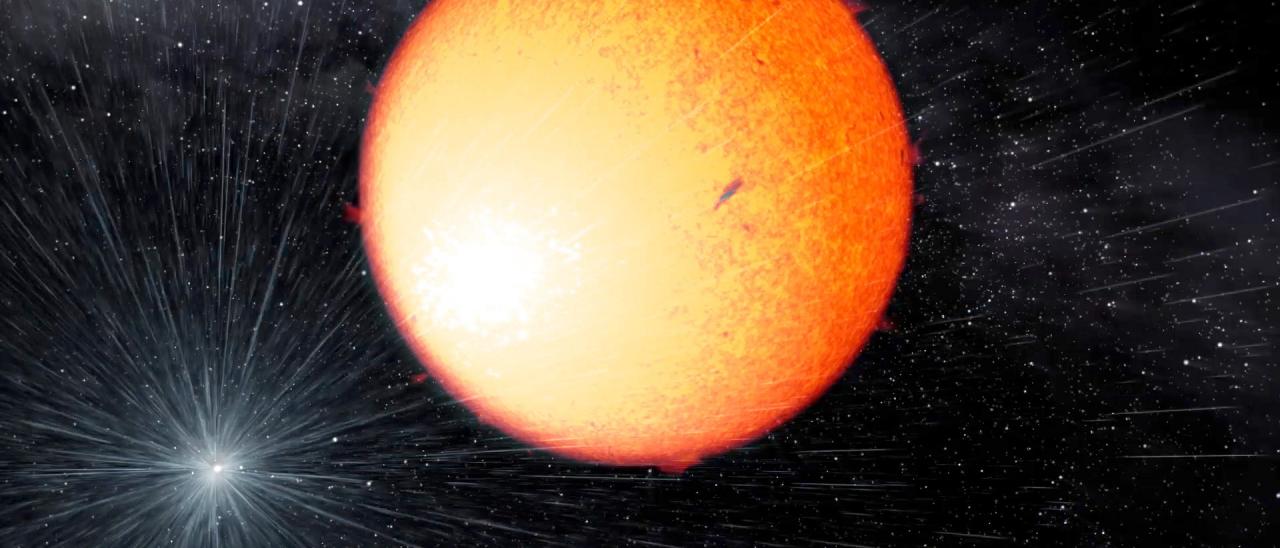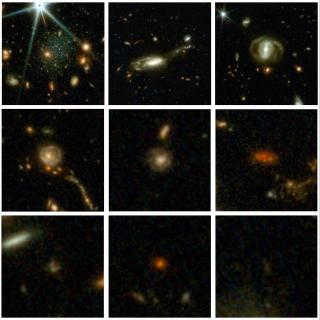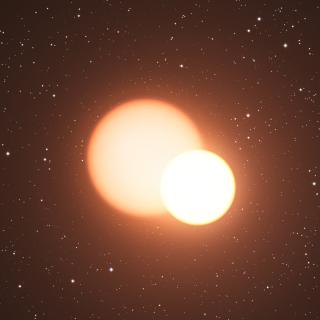A team of researchers from the Instituto de Astrofísica de Canarias (IAC), the University of Manchester and the Norwegian University of Science and Technology have detected an anomalously high lithium abundance in the atmosphere of the companion star of a binary millisecond pulsar. The lithium abundance is higher compared to stars with the same effective temperature and high-metallicity stars and so the study provides unambiguous evidence for fresh lithium production.
Lithium is a fragile element and in stars similar to the Sun it is gradually destroyed in the interiors via low-temperature nuclear burning. However, the abundance of lithium in young stars of high metallicity (Population I) is higher than the value produced in the Big Bang Nucleosynthesis, when certain light elements, including lithium, were formed, which means that there are stars and mechanisms that produce and eject lithium into interstellar medium.
X-ray binaries are systems that emit intense X-ray radiation and consist of a compact object, usually a black hole or neutron star, and a companion star. The compact object feeds on material that it takes from the companion star, a process known as accretion. The conditions around compact objects are ideal for lithium production through spallation of carbon-nitrogen-oxygen (CNO) nuclei by neutrons in the inner accretion flow or on the companion star's surface. Although the observed lithium abundance in X-ray binaries is relatively high, it is not in excess of the Cosmic value or young Population I stars.
Lithium in a binary millisecond pulsar
Now, a team led by IAC researchers has found a surprising overabundance of lithium in a millisecond binary pulsar, a type of binary system consisting of a low-mass companion star and a neutron star or pulsar with a rotation period of a few milliseconds.
Using the archival high resolution spectroscopy taken with the Very Large Telescope ((VLT) at the European Southern Observatory (ESO) in Paranal (Chile) and the William Herschel Telescope (WHT) at the Roque de los Muchachos Observatory on La Palma (Spain), researchers have performed a chemical abundance analysis of the binary millisecond pulsar PSR J1023+0038.
In this system, the team has found a metal-rich companion star with abundances of chemical elements very different from the elemental abundances observed in companion stars in X-ray binaries and in stars in the solar neighbourhood. "In fact, we have surprisingly detected a higher amount of lithium than observed in stars with the same effective temperature, Population I stars and X-ray binaries," explains Tariq Shahbaz, IAC researcher and first author of the study.
According to the study, the pulsed gamma-ray emission that occurs in most millisecond binary pulsars involves a copious production of particles, some of which end up as part of the magnetised wind that emerges from the pulsar at high speed. "The impact of gamma rays and relativistic particle flow with the atmosphere of the companion star fragments the carbon, nitrogen and oxygen nuclei present and generates new lithium, which leads to an enhanced abundance of this chemical element," says Jonay González Hernández, researcher at the IAC and co-author of the study.
"Spallation via gamma-rays or protons can lead to substantial lithium enrichment in the secondary star's atmosphere and so binary millisecond pulsars could provide sites for fresh lithium production," comments Daniel Mata Sánchez, researcher at the IAC and co-author of the study.
Article: T. Shahbaz, J.I. González-Hernández, R.P. Breton, M.R. Kennedy, D. Mata Sánchez, M. Linares: "The peculiar chemical abundance of the transitional millisecond pulsar PSR J1023+0038 - Li enhancement", Monthly Notices of the Royal Astronomical Society (MNRAS), June 2022. DOI: https://doi.org/10.1093/mnras/stac492 arXiv: arXiv:2202.09070
Contact at the IAC:
Tariq Shahbaz, tsh [at] iac.es (tsh[at]iac[dot]es)
Jonay González Hernández, jonay [at] iac.es (jonay[at]iac[dot]es)
Daniel Mata Sánchez, daniel.mata [at] iac.es (daniel[dot]mata[at]iac[dot]es)







